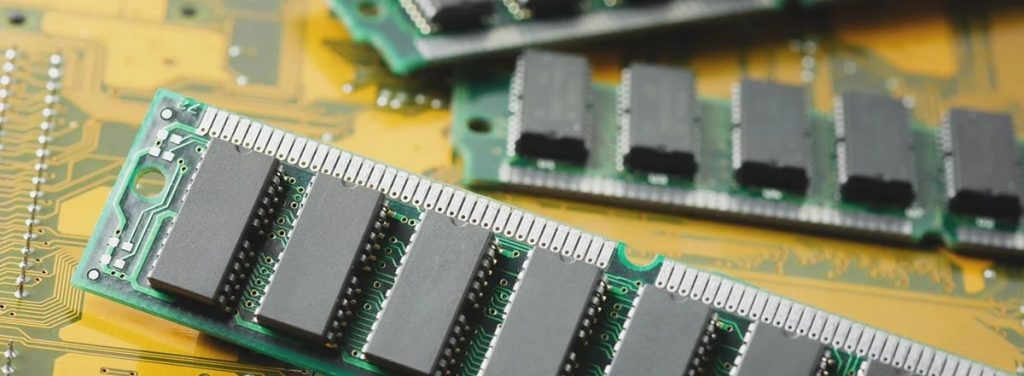Businesses increasingly rely on software applications to streamline operations, underscoring the critical importance of maximizing RAM value. With even slight increases in RAM capacity, system performance can see significant enhancements, facilitating smoother data processing and minimizing lag. Despite this potential, many organizations overlook the benefits of RAM optimization, settling for subpar software efficiency. By delving into the nuances of RAM value and its direct impact on business operations, we can unveil the secrets to unleashing peak software performance and boosting productivity. What strategies are essential for maximizing RAM value and how can they be harnessed to revolutionize business operations?
Key Takeaways
- Upgrading to higher-capacity RAM modules boosts software efficiency and reduces lag, enhancing business operations.
- Efficient data compression algorithms elevate RAM utilization, freeing up memory for critical business applications.
- Optimizing memory allocation improves business operations and productivity by reducing software latency and crashes.
- Identifying memory-intensive applications helps allocate RAM effectively, ensuring seamless data processing and efficient system performance.
- Regularly updating software and monitoring RAM usage helps detect potential memory leaks, ensuring optimal system responsiveness and productivity.
Understanding RAM Value in Business
In today’s data-driven business environment, maximizing RAM value is crucial for optimizing software performance, as inadequate memory allocation can significantly impede productivity and efficiency. Effective RAM utilization guarantees seamless data processing, reducing lag and crashes. By adopting tips for maximizing RAM value, businesses can improve overall system performance, leading to enhanced operational efficiency and competitiveness.
Identifying RAM-Intensive Business Operations
Several business operations naturally depend on substantial RAM allocation, including data analytics, video editing, and 3D modeling, which can significantly benefit from optimized RAM value. These operations typically require fast data processing, massive data storage, and simultaneous task execution, making RAM a critical component. By identifying these RAM-intensive operations, businesses can prioritize RAM optimization to improve overall software efficiency.
Tips for Maximizing RAM Value
To maximize RAM value, businesses should consider upgrading to higher-capacity RAM modules, as even a slight increase in RAM can significantly boost software efficiency and overall system performance. Moreover, implementing efficient data compression algorithms and optimizing memory allocation can further elevate RAM utilization, leading to improved business operations and productivity.
Optimizing Software Efficiency With RAM
By optimizing memory allocation, businesses can significantly reduce software latency, allowing for faster data processing and improved system responsiveness. To maximize RAM value, consider the following tips for optimizing software efficiency:
- Identify memory-intensive applications and allocate RAM accordingly.
- Implement efficient data compression to reduce memory usage.
- Regularly update software to guarantee optimal memory allocation.
- Monitor RAM usage to detect potential memory leaks.
Frequently Asked Questions
Can I Upgrade My Laptop’s RAM to Improve Business Operations?
Yes, upgrading your laptop’s RAM can significantly enhance business operations by boosting processing speed, improving multitasking capabilities, and reducing lag time, ultimately leading to increased productivity and efficiency.’
How Much RAM Is Required for Multitasking in Business Software?
For ideal multitasking in business software, a minimum of 16 GB RAM is recommended, with 32 GB or more ideal for heavy users, ensuring seamless performance and efficient workflow management.
Does Maximizing RAM Value Improve Data Analysis and Visualization?
Maximizing RAM value significantly boosts data analysis and visualization by allowing for smoother processing of large datasets, reduced lag, and accelerated computation, thereby facilitating insightful business decisions and improved operational efficiency.
Can Insufficient RAM Cause Software Crashes and Downtime?
Not having enough RAM can definitely cause software crashes and downtime, as it leads to memory bottlenecks, slowing down processes and increasing the likelihood of system failures, resulting in lost productivity and revenue.
Does Maximizing RAM Value Enhance Customer Relationship Management?
Maximizing RAM value significantly boosts customer relationship management by ensuring seamless interactions, rapid data processing, and efficient CRM software performance, leading to improved customer satisfaction and loyalty.
Conclusion
In summary, maximizing RAM value is vital for improving software efficiency and enhancing business operations. By optimizing RAM capacity, businesses can guarantee seamless data processing, reduce lag, and enhance overall software performance. Efficient data compression algorithms and optimized memory allocation play key roles in elevating software efficiency. By prioritizing RAM optimization, businesses can boost operational efficiency, productivity, and overall performance. Ultimately, maximizing RAM value is paramount for businesses seeking to streamline operations and stay competitive in today’s fast-paced digital environment.
Also read: Redefining Sports Gear Technology with Eco-Friendly Algorithms

